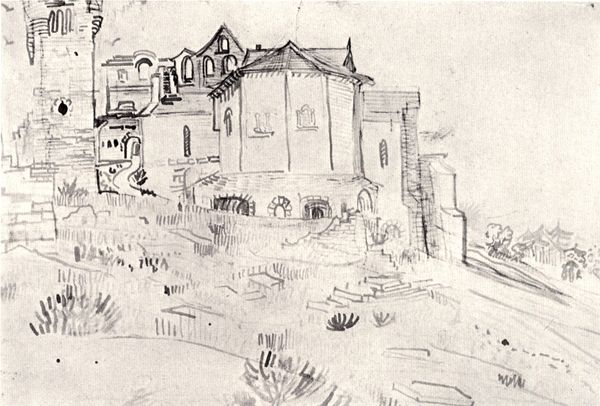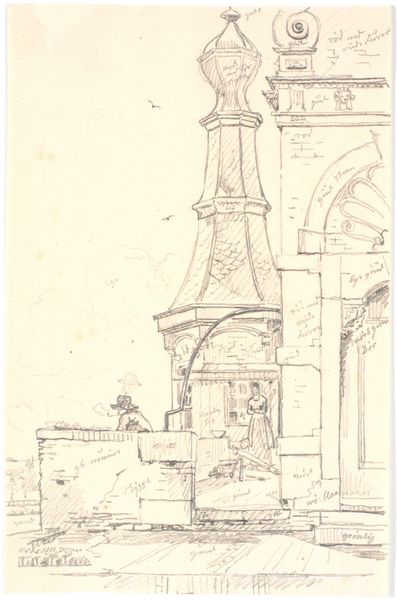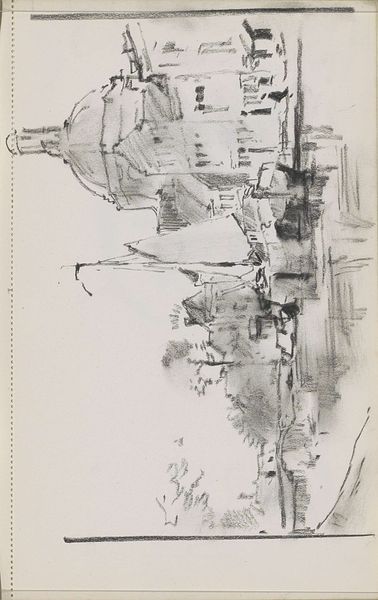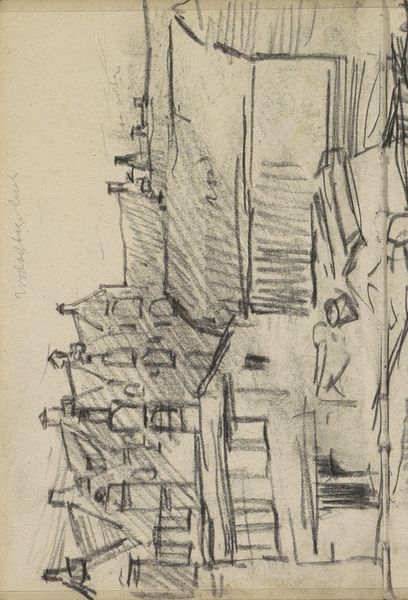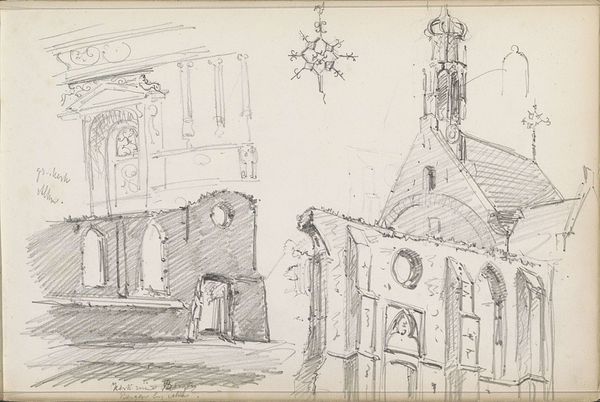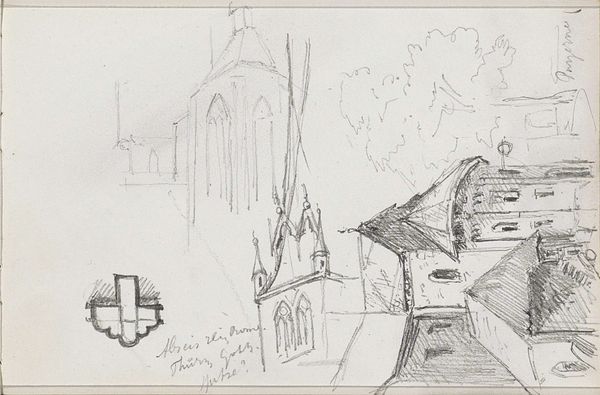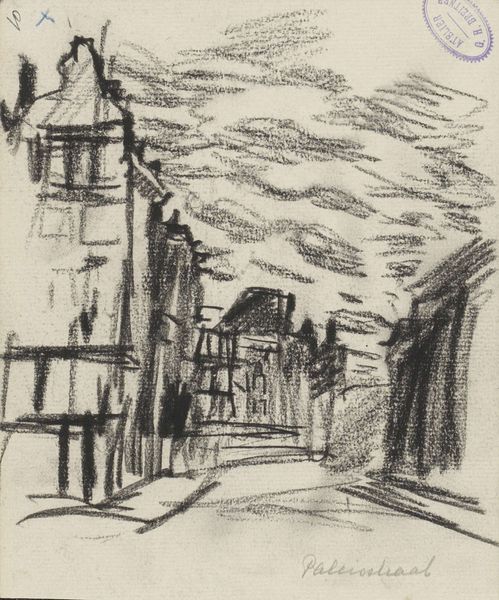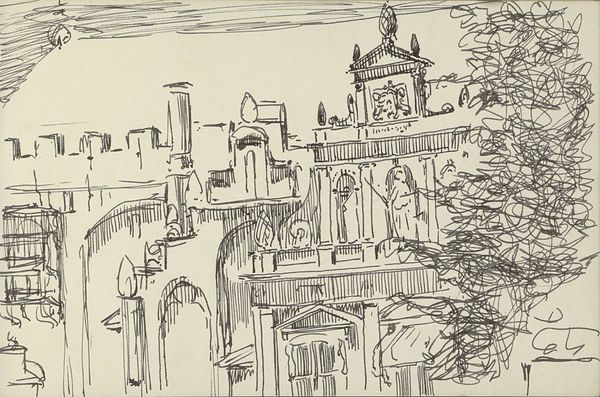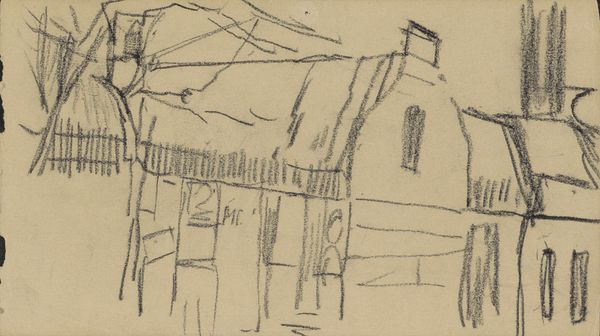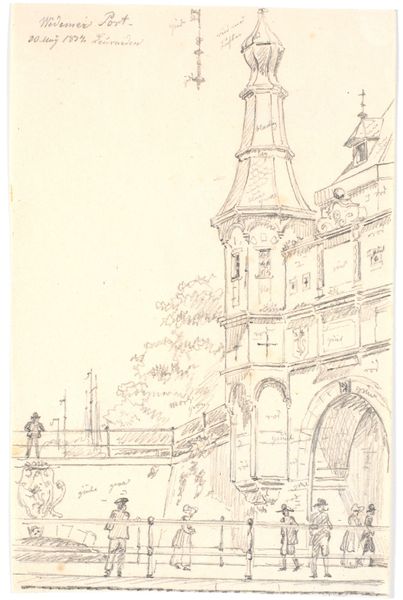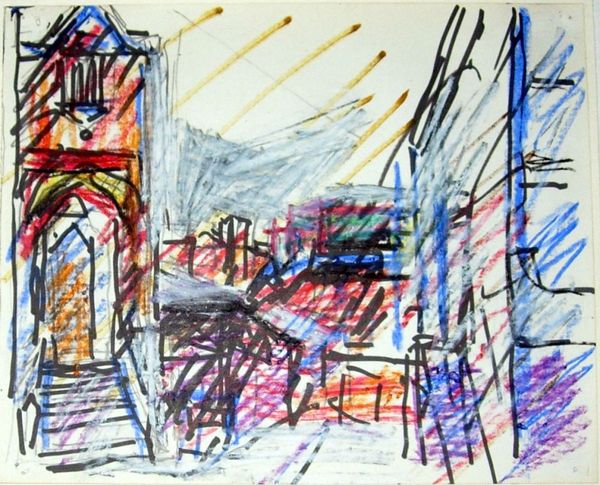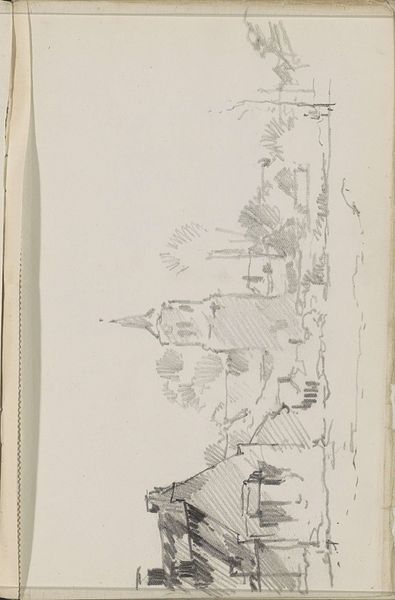
drawing, charcoal
#
drawing
#
landscape
#
german-expressionism
#
expressionism
#
cityscape
#
charcoal
Copyright: Public domain
Editor: Here we have Ernst Ludwig Kirchner's "Frauenkirche," a charcoal drawing from 1908. The rapid strokes give it such an urgent, almost unsettling feel. How do you interpret this work? Curator: This drawing emphasizes the physical act of creation. Notice how Kirchner doesn’t try to hide the materiality of the charcoal. The rough, broken lines aren't just descriptive, they ARE the image. He's almost flaunting the labour involved. Do you see how that raw application shifts our focus? Editor: Yes, definitely! It feels less about the Frauenkirche itself and more about Kirchner's process of representing it. Does the German Expressionist movement contribute to that emphasis? Curator: Absolutely. They valued authentic expression over academic polish. Consider the social context: industrialization was transforming Germany, creating new kinds of labour and new markets for art. Expressionists often challenged traditional boundaries between art and craft, asking us to reconsider what constitutes 'high art' when so much making is happening outside the established art world. Editor: So the very *process* and the material he's using—the charcoal—are integral to the work's meaning. That changes my whole perception! Curator: Precisely. Think about how readily available charcoal was. It allowed for a directness, an immediacy tied to broader social and economic changes influencing artistic production. Editor: I’d never considered the implications of charcoal itself! It really broadens the possible meanings of this seemingly simple sketch. Curator: Right! It reminds us that art is always intertwined with its material and social circumstances. Editor: Thanks for highlighting that; I'll definitely look at art with a more material-focused eye now.
Comments
No comments
Be the first to comment and join the conversation on the ultimate creative platform.
